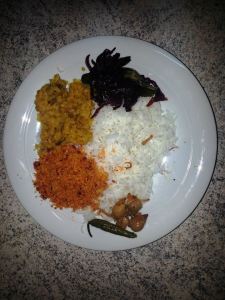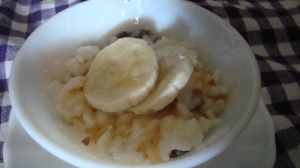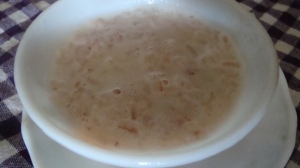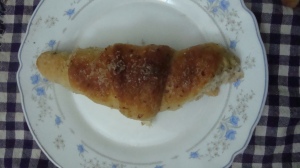Today’s guest blogger is renowned independent film-maker Asoka Handagama. His movies have garnered much critical acclaim and have been screened at numerous major international film festivals (Toronto, Edinburgh, Tokyo etc.) around the world. His most recent movie ‘Ini, Avan’ had its world premiere at the ACID programme in the Cannes festival in 2012. Asoka is currently working on his newest film project which he plans to partially fund through crowd-funding. If you would like to participate in Sri Lanka’s first partially crowd-funded movie production, do check out the film’s Crimso page.
Today, Asoka shares his favourite dish, Hathmalu – a specialty dish made during the Sri Lankan New Year/ Avurudhu/ Puthaandu.
Hath Malu ( A curry made of Seven vegetable/ingredients )
This traditional curry dish is prepared for an auspicious AVURUDU meal; popular in Sabaragamuva province in Sri Lanka. Uniqueness in this dish is that it is not prepared for any other occasion than AVURUDU. It is so yummy that you can swallow a whole load of milk-rice in a few seconds!

Hathmalu Recipe
Ingredients
- Cashew Nuts (raw un roasted)
And any six (or seven) of the following:
- Egg plant/ aubergines
- Jackfruit Seeds
- Snake beans
- Sweet potato
- Sweet potato baby leaves or pumpkin leaves
- Desha-ala (indigenous potato)
- Desha-ala leaf stems
- ‘Ambul’ banana (unripe bananas)
For the curry:
- Turmeric
- Chili powder (un roasted)
- ‘Thuna paha’ local spice mix such as cinnamon, cardamom, cloves (un roasted)
- Salt
- Red onions
- Green chili
- Curry leaves
- Coconut milk: thick cream (first squeeze) and diluted (second squeeze)
Method:
Chop aubergines and other vegetables and potatoes into 1cm x 1cm x 1cm cubes. Add the seven main ingredients along with salt, spice mix, curry leaves, chili powder, red onions, green chili, turmeric and diluted coconut milk to a (preferably) clay pot. Place on stove and allow to cook slowly on low heat until all ingredients have cooked and softened (15-20 minutes). Then add thick coconut milk and (on medium heat) allow to simmer until the curry thickens and take it off the heat.
Serve curry with milk rice.
 Recipe source: Asoka Handagama.
Recipe source: Asoka Handagama.






















